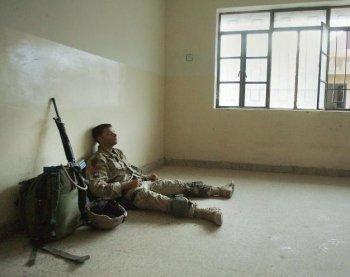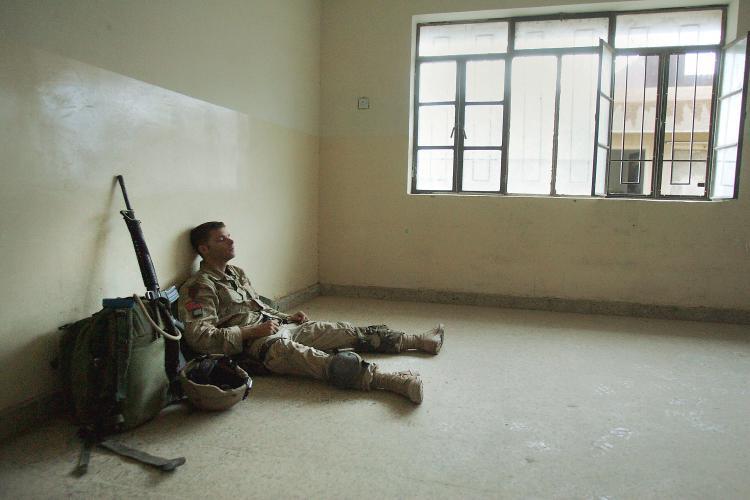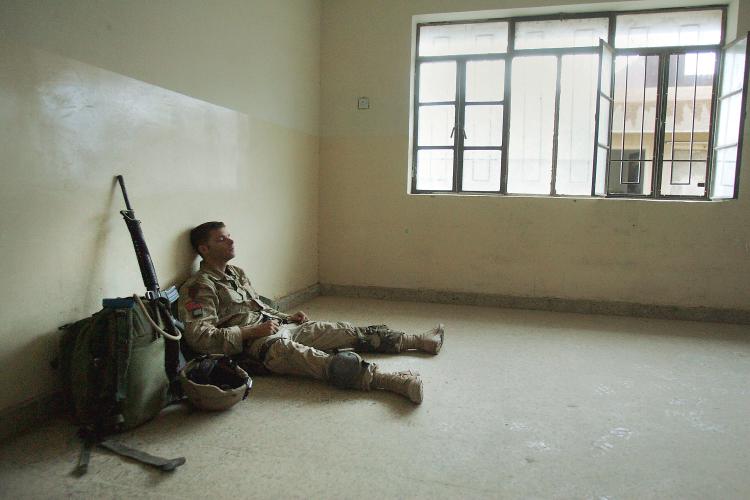While suicides among active duty troops are beginning to decrease, 2010 saw a spike in suicides in the Army National Guard and Army Reserve. Military leaders attribute the rise of suicides to the “civilian and a soldier” role of the branches.
Gen. Peter W. Chiarelli, vice chief of staff of the Army raised the issue on Sept. 9, 2010, saying, “We’re seeing a really disturbing increase in reserve-component suicides,” the Army News Service reported.
The full toll was revealed on Jan. 19, with suicides in 2010 nearly doubling since 2009 in the Army National Guard and Army Reserve, AP reported. The announcement was made at the Pentagon by military officials including Chiarelli, Army Reserve chief Lt. Gen. Jack Stultz, and Army National Guard acting Director Maj. Gen. Raymond Carpenter.
“Since Desert Storm we [have] activated more National Guard and Reserve troops [than] in our whole history. When they come home it’s different from when the regular troops come home,” said Fang Wong, one of the leading candidates to become the next American Legion national commander, in an earlier interview with The Epoch Times.
With other branches of the military, troops typically live on a military base with other troops. Wong says this gives troops “better peer support” as they are surrounded by others who experience many of the same stresses, and who they can speak with openly.
Since the National Guard and Reserve are civilian-based military branches, however, when troops return, they leave their units and go back to their regular jobs. Once back, they may feel uncomfortable sharing what they’ve been through with friends or family who have not had similar experiences.
“So they come home, but if you’re not with the regular army you’re really kind of out there by yourself, and the frustration will build up,” Wong said. “I think that’s where a lot of people couldn’t handle it.”
This perception was shared by Army Reserve chief Lt. Gen. Jack Stultz, who said reservists being separated from their units can pose problems, AP reported.
Being part of the American Legion, Wong believes that veteran groups can offer a much-needed environment where Army Reserve and National Guard troops can meet with other veterans.
In addition to suicide prevention programs, the military is working on programs to support troops. Among them is the National Guard’s Beyond the Yellow Ribbon program, which aims to help troops and their families find community support, training, and other services.
The civilian suicide rate is steady at around 19.2 for every 100,000 people each year. The Army and Marine Corps. suicide rates exceeded the civilian rate in 2008. The Navy and Air Force remain much lower, with a suicide rate at around 12 for every 100,000 service members, according to military statistics.
Troop suicides are not directly tied to military deployment, statistically. Half of the Reserve’s suicides were among troops who were never deployed, said Chiarelli, on Military.com, the largest military and veteran membership organization, reported.
Common factors are found among troops who have committed suicide. At the top of the list are relationship problems, which appeared in 58 percent of all troop suicides in 2009, according to an Army report. What the military refers to as “high-risk behavior,” is also a common factor, and includes drug or alcohol abuse.
Gen. Peter W. Chiarelli, vice chief of staff of the Army raised the issue on Sept. 9, 2010, saying, “We’re seeing a really disturbing increase in reserve-component suicides,” the Army News Service reported.
The full toll was revealed on Jan. 19, with suicides in 2010 nearly doubling since 2009 in the Army National Guard and Army Reserve, AP reported. The announcement was made at the Pentagon by military officials including Chiarelli, Army Reserve chief Lt. Gen. Jack Stultz, and Army National Guard acting Director Maj. Gen. Raymond Carpenter.
“Since Desert Storm we [have] activated more National Guard and Reserve troops [than] in our whole history. When they come home it’s different from when the regular troops come home,” said Fang Wong, one of the leading candidates to become the next American Legion national commander, in an earlier interview with The Epoch Times.
With other branches of the military, troops typically live on a military base with other troops. Wong says this gives troops “better peer support” as they are surrounded by others who experience many of the same stresses, and who they can speak with openly.
Since the National Guard and Reserve are civilian-based military branches, however, when troops return, they leave their units and go back to their regular jobs. Once back, they may feel uncomfortable sharing what they’ve been through with friends or family who have not had similar experiences.
“So they come home, but if you’re not with the regular army you’re really kind of out there by yourself, and the frustration will build up,” Wong said. “I think that’s where a lot of people couldn’t handle it.”
This perception was shared by Army Reserve chief Lt. Gen. Jack Stultz, who said reservists being separated from their units can pose problems, AP reported.
Being part of the American Legion, Wong believes that veteran groups can offer a much-needed environment where Army Reserve and National Guard troops can meet with other veterans.
In addition to suicide prevention programs, the military is working on programs to support troops. Among them is the National Guard’s Beyond the Yellow Ribbon program, which aims to help troops and their families find community support, training, and other services.
The civilian suicide rate is steady at around 19.2 for every 100,000 people each year. The Army and Marine Corps. suicide rates exceeded the civilian rate in 2008. The Navy and Air Force remain much lower, with a suicide rate at around 12 for every 100,000 service members, according to military statistics.
Troop suicides are not directly tied to military deployment, statistically. Half of the Reserve’s suicides were among troops who were never deployed, said Chiarelli, on Military.com, the largest military and veteran membership organization, reported.
Common factors are found among troops who have committed suicide. At the top of the list are relationship problems, which appeared in 58 percent of all troop suicides in 2009, according to an Army report. What the military refers to as “high-risk behavior,” is also a common factor, and includes drug or alcohol abuse.




![[Premiering 7/12, 10:30 AM ET] There is a Clear Need for School Choice: Corey DeAngelis](/_next/image?url=https%3A%2F%2Fimg.theepochtimes.com%2Fassets%2Fuploads%2F2025%2F07%2F11%2Fid5886336-Corey-DeAngelis_REC-1080x720.jpg&w=1200&q=75)


